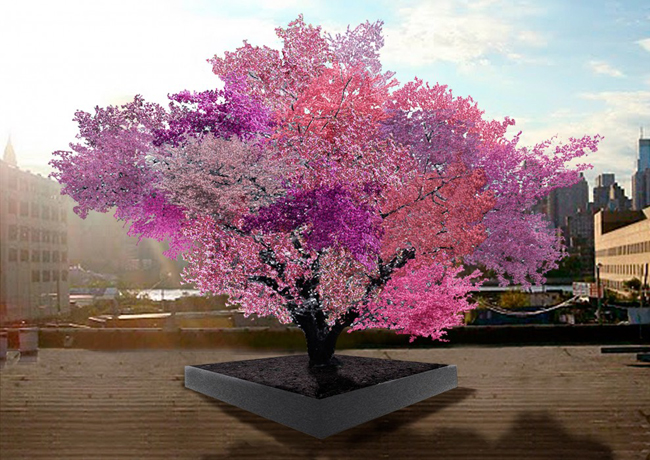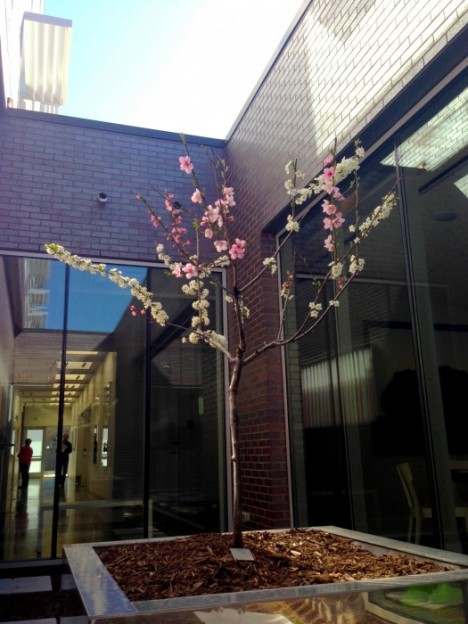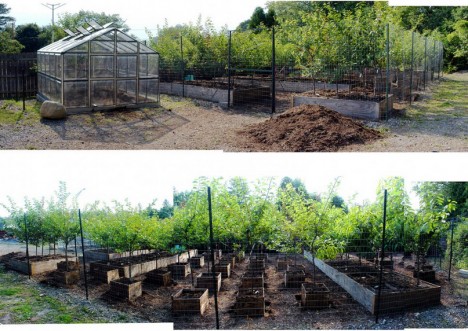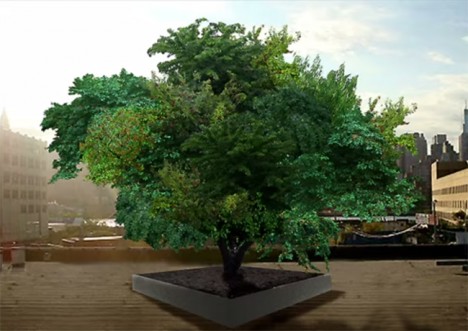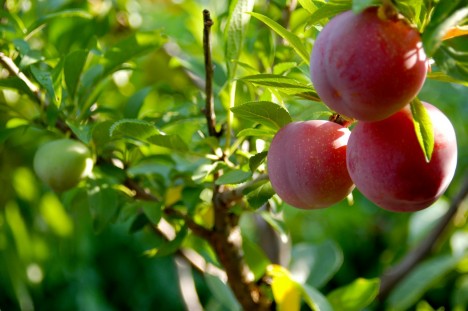Giving the phrase ‘garden variety’ a fresh new meaning for urban gardeners, this amazing hybrid plant makes it possible to raise dozens of types of produce on a single tree using low-tech grafting techniques.
A work of both art and science by Syracuse University art professor Sam Van Aken, the all-in-one Tree of 40 Fruit is the culmination of years spent experimenting with hybridized stone fruit trees that produce peaches, plums, apricots, nectarines, cherries and much more.
Treating his work (with over 250 types of fruit) as a combination of farming and arborsculpture, Aken combines heirloom, antique, and native varieties, all set to bloom in seasonal sequences designed to create edible results as well as aesthetic effects throughout the year.
The custom-crafted hybrid looks like an ordinary fruit tree until it blossoms a key points through spring, summer and fall with its rich variety of flowers and fruits.
Using a chip grafting process, Aken takes a sliver off of a tree and tapes it the growing hybrid, letting the pieces grow together over the winter then pruning them back as needed.
The resulting trees of 40 fruit continue to be grown and dispersed around the country to museums, community gardens and other public spaces.
In an interview with Epicurious, Aken explains that “as the project evolved, it took on more goals. In trying to find different varieties of stone fruit to create the Tree of 40 Fruit, I realized that for various reasons, including industrialization and the creation of enormous monocultures, we are losing diversity in food production. In addition to maintaining these varieties in my nursery, I graft them to the Tree of 40 Fruit. Additionally … I go to local farmers and growers to collect stone fruit varieties and graft them to the trees. In this way they become an archive of the agricultural history of where they are located as well as a means to preserve antique and native varieties.”
